BRAND STRATEGY ELEMENTS
[The Top 10 Must Have’s]
It’s easy to get sucked into researching techniques and strategies for a brand to follow and come out the other side more confused than when you went in.
You read a couple of articles and you start to get the picture, but then you read a couple more which completely contradicts the first two and then you’re left back at square one.
In this article, I define the Ten Critical Elements Every Brand Strategy Must have… so you don’t have to wonder anymore.
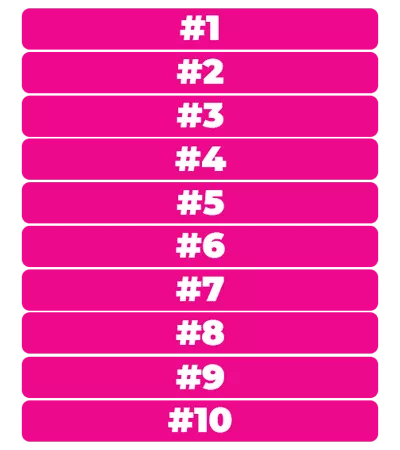
A Unique Brand Is Creative
The world of strategic branding is full of… well… crap is one way of putting it.
I can’t tell you how many articles I’ve read that have contradicted common sense let alone best practices.
But that’s that thing.
Best practices are not what makes you stand out.
If you’re building a brand then simply doing what everyone else is doing isn’t going to work.
Instead, knowing the key elements you need to build provides guidence as well as a creative environment to build a unique brand.
The Video Breakdown
One-click subscribe for video updates
Brand Strategy Element #1:
Internal Branding
Internal branding is overlooked by 95% of brand builders out there.
The terms
Purpose
Vision
Mission and
Values
have been lumped together as though they’re an inconvenience.
Like a single task of a handful of statements that need to be drawn up to get it over and done with.
Most will go looking for statement templates, pop in their relevant details [Here], [Here], [Here] and [Here] and boom…

Internal brand check…. What’s next??
Your internal brand should be the driver of your entire brand strategy and communication and should dictate how it behaves and where it’s going.
Brand purpose is a fundamental pillar in-and-of-itself.
If something so significant is developed as a handful of template statements, the brand sets out on its journey with no compass.
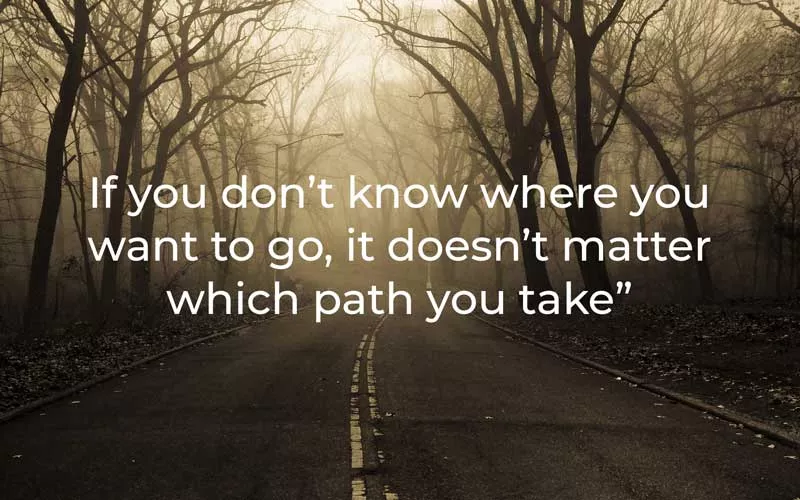
Your internal brand consists of 4 key elements that each play a significant role:
Your Purpose (The belief of your brand)
Your Vision (The ambition of your brand)
Your Mission (The commitments of your brand)
Your Values (The behaviour of your brand)
When you approach your internal brand, remember its significance and think of your brand as a living entity.
How we’re made up internally shapes everything in our lives.
Your brand is the same so develop your internal brand with that weight of importance.
Brand Strategy Element #2:
Audience Persona
Like your internal brand, there are plenty of templates to help you to find who your audience is.
Like this one from Hubspot.
Most will provide you with a section for demographics and some will provide you a section with psychographics.
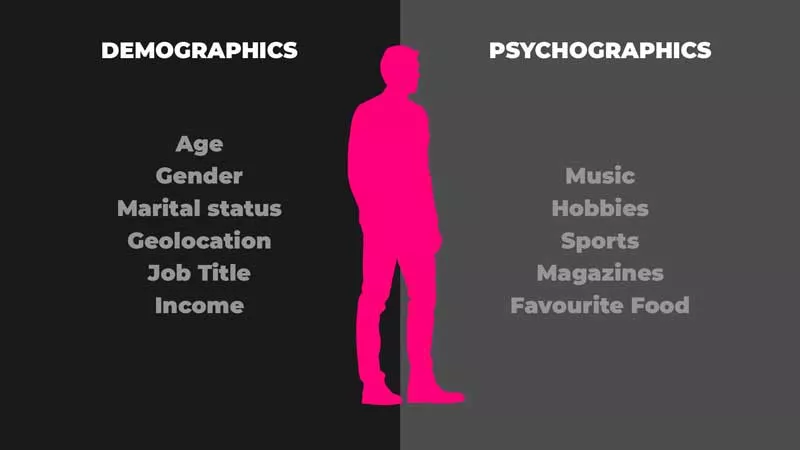
Demographics are essentially a categorisation tool that allows you to define the broadest group of who your audience is.
Detail such as:
Age
Gender
Marital Status
Geo Location
Job Title
Income etc
Rather than help you define who your audience is, this helps you to eliminate the large portion of the population you’re not targeting.

Your psychographics goes into a bit more detail.
By drilling down into your broad audience (defined by their demographics) you can uncover the personality traits and behaviours of the group, bringing them into clearer focus.
Here you’ll find behaviours such as
Preferred music
Hobbies
Sports
Magazine
The car they drive
The food they like
How they spend their weekend etc
Both your psychographics and demographics are an important part of defining who your audience is, but you’re still left without a lot of details at this point.
If you were an ice sculptor, you’d be able to make out the shape of what you’re aiming for, but the lack of detail would leave a lot to imagination.

An effective Audience Persona is full of detail.
This doesn’t mean that you need to get granular into every aspect of their lives.
It’s not really important if they prefer their eggs scrambled or sunny side up (unless of course you’re serving eggs).
The detail of an effective audience avatar revolves around the problems they have in their lives.
More specifically, the problems they have that you can help them with.
When you define specifically, these problems and the emotions tied to those problems, you have an effective tool.
This is a tool you can refer to in order to better resonate with your audience at every and any touch point.
PRO Brand Strategy BluePrint
Build Brands Like A Pro Brand Strategist

Brand Strategy Element #3:
Competitive Profile
Analysing your competitors can be quickly defined as a task to identify the strengths and weaknesses of your opposition in order to defeat them.
This approach though, takes the focus off of the centrepiece of your brand, which is your audience.

Your competitors will likely already reside in the mind of your audience somewhere.
If they don’t then they’re not the competitors you should be analysing because to the people you’re trying to reach, they don’t exist.
Competitive analysis is an exercise that’s most effective when it’s conducted from the audience’s perspective.
By stepping into the shoes of your audience, you need to ask the following questions:
What options do I have in the market?
Which options suit me best? Why?
Which options suit me least? Why
If I could have another option, what would I add or take away? Why?
The perspective of these questions if applied throughout your competitive analysis will give you an acute insight into how to differentiate your brand from the rest.
Explore Brand Strategy
Programs & Tools
Brand Strategy Element #4:
Differentiation Strategy
A common misconception around trying to find a differentiator and develop a differentiation strategy is that you need to be revolutionary.
Certainly, if you develop a new product as Nestle did with Nespresso,

offer a new technology like Tesla did with their electric roadster

or create an entirely new category as Apple did with the iPad,

then you’ve landed on the holy grail of positioning.
Chances are however; the brand you’re building is not revolutionary and the products and services you offer are actually quite similar to your competitors (who are noisy and plentiful).
Whether what you have is revolutionary or not is beside the point.
As a brand fighting for a place in the mind of your audience, you must use whatever means you have at your disposal, to differentiate yourself in the mind of your audience from your competitors.
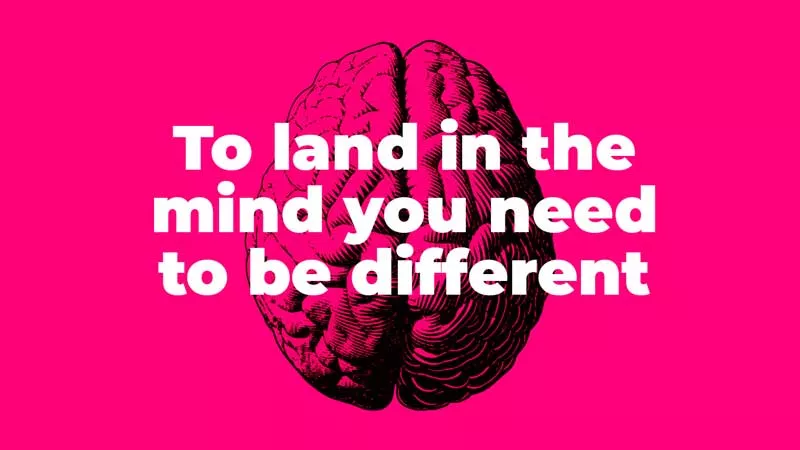
This is where creativity in branding goes far beyond a clever logo and it’s also where an understanding of your customer and their problems are imperative.
The truth is, you don’t need to be revolutionary to stand out.
But you do need to know your audience and their problems intimately to then find an angle they will deem valuable.
An angle that none of your competitors are already using.
This can be as simple as differentiating through messaging as Avis did when thy told their audience “We’re Only Number 2, That’s Why We Try Harder”.

Their difference was that they tried harder and the perceived value of their prospects was that they would be looked after more at Avis than with their competitors, Hertz.
The Dollar Shave club wasn’t revolutionary either.

They created quality blades for a reasonable price and pointed the finger at their biggest competitor, Gillette, for their unreasonable price and unnecessary features.
They leveraged the success of their competitors by taking an “against position”.
Is there anything your competitors are doing that doesn’t sit well with your audience?
If so, how can you point the finger at it in your positioning?
Brand Strategy Element #5:
Human Persona
The Human Brand Persona is a relatively new concept in Branding in that only a select few brands use it effectively.
Brands and consumers have an entirely different relationship than they once did.
The dialogue is two-way and transparent and brands have evolved into living entities with personalities and opinions.

In some cases, having opinions on topics such as politics and social debates) is forced upon them by their new bosses (The Millennial’s & Gen-Z’s) who want to know where they stand.
Today’s buyers expect their brands to “behave” a certain way, “believe” certain things and “speak to them” in a way that suits their own personality.
This has forced brands to adapt and take on more and more human traits resulting in brands with Human Personas.
Archetypes, which is a scientific concept dating back to Greek Mythology, allow us to categorise all personalities into 12 distinct personality types.
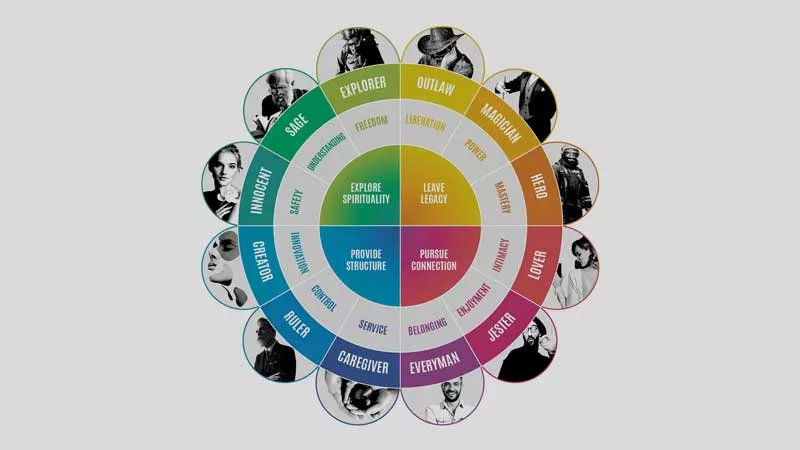
This critical tool enables brands to identify the personality of their audience and the personality most likely to appeal to them.
Brands that approach this idea strategically and build their persona’s through an intimate understanding of who their brand is attempting to attract, are on the cutting edge of the brand evolution.
Branding is a game of resonating and there is no better way to resonate with a person than being authentically human.
Brand Strategy Element #6:
Tone-Of-Voice
A brand’s tone-of-voice is an extension of its personality so it’s another key approach to resonating.
It’s a content driven world today so brands are communicating is so many different ways.
Short social posts, long informative blog posts, vlogs, educational videos, podcasts and advertising.

All of these media offer a platform for brands to talk to their audience in a way that feels familiar to them.
If you find yourself in a group full of strangers it can be easy to feel vulnerable or self-conscious.
But if you suddenly hear a familiar voice, that familiarity offers a sense of calm, reassurance and belonging.
The tone-of-voice you use to deliver your message to your audience can be an immensely impactful strategic tool.

Often, during the buying process, the noisy market represents an unfamiliar group.
If one brand speaks in a familiar way, while the others feel corporate or foreign, the consumer will be drawn in by the familiarity.
A brand that makes itself feel familiar to its audience, especially in unfamiliar surroundings, wins the trust of their audience at a critical moment.
Regardless of the media or platform, brands need to inject their unique personality and tone-of-voice into the message in order to feel familiar.

If they manage to achieve that familiarity, they’ll have won a small but critical battle for a position in the mind of their audience.
Few brands approach personality and tone-of-voice in a methodical way.
Those that do, earn an edge of familiarity.
Brand Strategy Element #7:
Tagline
Through differentiation and positioning, you identify what it is your audience needs to remember about your brand.
Your differentiator should shape what you communicate to your audience and how you communicate it.
If you try to cram too much into your tagline, its effectiveness will be diluted.
The tagline therefore is an effective way for you to plant the seed in the mind of your audience around that thing you need to be remembered for.

It acts as an anchor in the mind of your audience, which they can follow back to your brand.
If you can manage to define a tagline that cleverly, concisely and memorably sits in in the mind of your audience and informs them of why you should be remembered, you pave the way for brand recall.
One of my favourite examples of an effective tagline is from the Dollar Shave Club.

They’ve simply told you why they want you to remember them through the benefit you’ll receive, using a clever and humorous play on words.
They’ve also staked a claim for owning the word “Shave” in their audiences mind with the word used three times between the brand name and tagline.
Brand Strategy Element #8:
Core Message Framework
Too many brand-builders go in search of their core message to define what they want to say to their audience.
When they find it they have a distilled paragraph of text that clearly describes what they do for their customers.
Having a clear and concise core message is important for clarity within the internal brand.

Externally however, it doesn’t offer much in terms of practical execution of long-term messaging.
For your brand to earn the trust of your audience, you need to communicate consistently across all touch points.
With a core message paragraph, you don’t have much in the way of guidance and direction for that communication (especially considering how much content is produced today).
Your brand needs more that a paragraph of text for effective and consistent communication.
It needs a framework to guide communication so that key messages are transmitted to the audience consistently over time.

This framework needs to identify all the brand should mean to their customers including
Who their audience is
Their pain-points
The difference offered
The practical benefit
The emotional benefit
A detailed outline of what each of these elements includes offers a brand long-term guidance for consistent messaging.
While personality and tone-of-voice play a vital role in initially achieving familiarity, consistent messaging over time turns that familiarity into trust.
Trust is without a doubt one of the most important influencers of the decision-making process when consumers line up their options and make their choices.
Brand Strategy Element #9:
Storytelling Framework
We’re all captivated by story because it’s been the means of transferring information from generation to generation for millions of years.
Long before complex language and scripture, early humans would create elaborate drawings on cave walls to tell future generations of their plight.
Today, many of us still love to get stuck into a good book, while most of us will happily watch a two hour movie or an ongoing series that spans 10 years or longer.

We love stories because we can see ourselves in them.
We follow the journeys of the characters and we relate to their struggles, fears, challenges and achievements.
Brands are using story more and more because they understand the impact they have.
Most brands however, overlook the reason we love story so much.
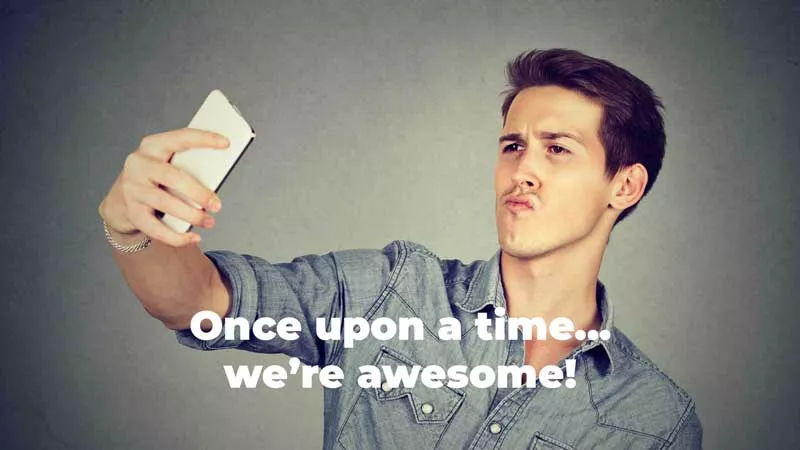
They tell the story of why their brand came into existence, who they founders are and where they’re going (which doesn’t make for a story your audience can see themselves in).
Brand storytelling is becoming an increasingly relevant way for brands to communicate and will be a huge aspect of future branding.
But only brands that shine the light on their audience and fill in the details of their fears, challenges, hopes and victories will draw their audience in through the association and familiarity of the main character.
So if you’re creating a story for your brand (which you should), then demote the founders to “extras” and give your customer the “lead role”.
It’ll be far more engaging to them.
Brand Strategy Element #10:
Brand Identity System
The brand identity system is often referred to as “the brand” because it brings it to life visually.
But brand-builders, who develop their brands strategically, only arrive at the visual representation when 90% of the brand has been developed.

Just as each of the previous elements I’ve covered in this post are critical to a strategic brand, so is the brand identity.
The visual identity is another tool you can use to resonate with your audience though this is the element that brings the brand to life visually.
The name of the game doesn’t change no matter which strategic element you’re developing.
You want to resonate and feel familiar to your audience and the visual identity can do that through the:
Logo
Typography
Colour Palette
Image Style and
Graphics
The visual identity is just another opportunity to resonate.
It acts as a vehicle to transmit other strategic elements such as our personality, tone of voice and differentiator.

Brands that are built without a strategic foundation lack the insight to define what they need to communicate visually.
If a brand is visually appealing, it earns the chance to show the audience what’s behind the curtain.
Without a solid strategy, it won’t take the audience long to figure out that there’s nothing more to the brand than a good-looking curtain.
Conclusion
Each of these elements play a critical role in bringing a strategic brand to life.
Just like a machine missing a cog, overlooking any one of these elements can be detrimental for the longevity of your brand.
Make sure each element is represented and spend the time needed to develop each element comprehensively.
Are you building a brand now or at some stage in the future?
Which elements are you currently building into your brands and where do you need to develop your knowledge and processes?
Pop a comment in the box right now and let me know.
On-Demand Digital Program
Brand Master Secrets
Make the transition from hired-gun to highly valued brand strategist in less than 30 days. The systems, frameworks and tools inside this comprehensive program are all you need to level up.









I am developing a brand and yes all that you mention has made it confusing to me so thanks for the clarity
Awesome Cate… Glad to hear some fog has cleared :)
Stephen
Hi Stephen,
I want to say a big thank you for putting this guide together. It has completely demystified brand strategy for me.
I’ve been a designer for over 20 years, and in that time I’ve read so much content around this subject, and to be honest, I have felt completely bewildered.
Contradictory articles, endless terminology and over-complex definitions, do nothing but make your head spin and change your process on every project. There is so much noise out there about brand strategy and it can be hard to educate your clients in this subject when your not entirely confident yourself.
I’m very familiar with a lot of the content here, but the value lies in the way it’s simplified, defined and categorised.
Great tool, thank you!
Spencer
No problem Spencer,
I get where you’re coming from completely because I’ve been through the same. There’s been no clear path for designers to get this info.
Plenty more knowledge bombs to come to make it easy for you to build strategic brands for your clients
Cheers Spencer
Thank you very much. Really good material!!!
Most welcome Joan
I’m at the beginning thank God and will be building everyone of these elements into my brand. Keep doing what you do because you are the best at it and I’m eternally great full for finding you. Your YouTube videos are of MasterClass quality and framework.
Thanks Bryant ??
But a smiling visitor here to share the love (:, btw outstanding style. “He profits most who serves best.” by Arthur F. Sheldon.
I have learn several excellent stuff here. Definitely value bookmarking for revisiting. I wonder how much effort you set to make this sort of great informative site.
Im thankful for the blog article.Thanks Again. Fantastic.
This website really has all of the information and facts I needed concerning this subject and didn’t know who to ask. |